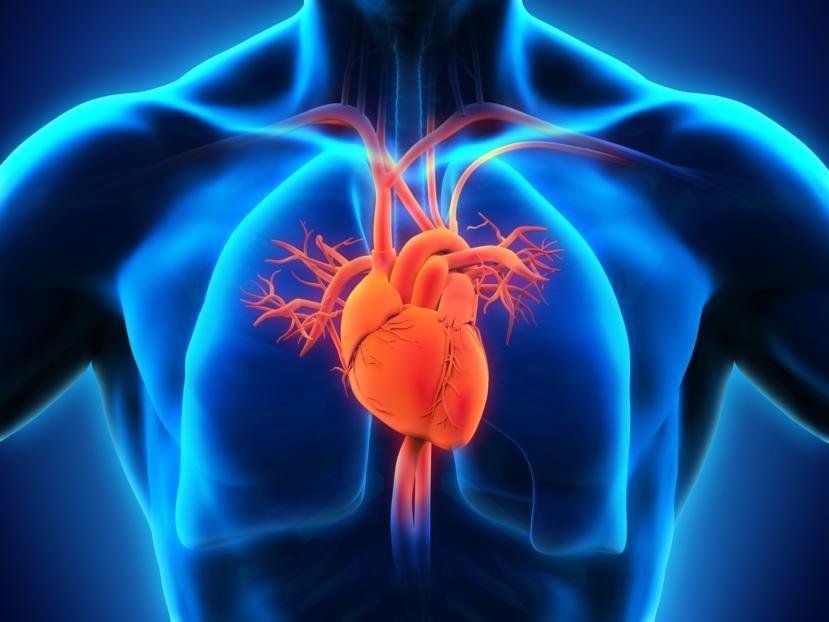Cystic Fibrosis Breakthrough in Left Ventricular Cardiac Disturbances

Cystic fibrosis may be one of the most common autosomal recessive lethal diseases, but there remains much that is unknown about it. It has been established that the disease causes chronic pulmonary disease and is also capable of leading to cor pulmonale with right ventricular dysfunction, but it was not until recently that it was found that on top of secondary effects from pulmonary disease, it may be possible that there is an intrinsic primary defect in the hearts of those with cystic fibrosis.
Background of CFTR Effect
Cystic fibrosis affects epithelial tissues, but research has been designation to characterizing the effect of cystic fibrosis transmembrane conductance regulator (CFTR) on numerous tissues in the body. Many propose the possibility of CFTR adding to the maintenance of resting membrane potential and minimization of action potential prolongation, associated with stimulation of inward currents of Ca (2+), with CFTR's conductive properties. Kuzumoto has conducted simulation studies that have led to the prediction of increases or decreases in CFTR channel density resulting in alterations that can be either positive or negative to the action potential duration. Previous studies that were used to examine effects of increased or decreased CTFR activity on isolated cardiomyocyte contractions showed that these predictions are likely to be true. CTFR is up-regulated during ischemia and down-regulated in those with cystic fibrosis who experience heart failure, on top of simply acting to maintain normal physiologic function. It is also present in protecting ischemic (pre-and post) conditioning.
Early Studies on Heart Function and Cystic Fibrosis
Studies have been conducted by many qualified investigators in order to analyze heart function in those who suffer from cystic fibrosis. Despite the fact that the left ventricle is of massive interest, most of these investigations targeted the right ventricle, as they followed the trends of pulmonary abnormalities in cystic fibrosis patients. As will be discussed later, when the pulmonary pressures are intensified for those with lung disease, right ventricular overload and cor pulmonale may often occur. Therefore, lung disease was often dismissed as the reason for those with cystic fibrosis to experience this overload and cor pulmonale, instead of investigating left ventricular dysfunction, in which there was a lack of widespread information.
In early analyses of the left ventricular dysfunction in patients with chronic cor pulmonale, a wide variety of tools were used to attempt analyses. Two-dimensional echocardiographic studies were taken of those with cystic fibrosis who experienced severe cor pulmonale in order to evaluate how the geometry of the left and right ventricles were effected by long-term pulmonary abnormalities. The procedures were as follows, "ten patients with severe obstructive pulmonary disease secondary to CF underwent evaluation by a mechanical sector scanner from the long axis, short axis, and four-chambered views. All patients manifested right heart failure. Eight had clinical scores less than 40 and dies within six months of the initial examination. All patients were receiving diuretics, and six were taking digoxin at the time of the study." Analysts commented that the most striking echographic feature was that they could observe the left ventricle flattening and compressing along its minor dimension.
According to researchers, this ended up being caused by a massively dilated right ventricle. They stated that dyskinetic contraction and relaxation were caused by this compression as well by other abnormalities of interventricular septal motion, which possibly could lend itself to a lessened stroke volume. Therefore, it was not surprising that at the time their results stated that massive right ventricular enlargement appeared as a major factor that could produce left ventricular dysfunction in chronic cor pulimale. However, as studies evolved it has been found that in the case of left ventricular dysfunction, there actually may very likely be a different cause.
Left Ventricular Debate
In current studies, as is widely known, left ventricular abnormalities have often been reported in those with cystic fibrosis. However, looking into the deeper meaning of the cause has resulted in some debate, as it is unknown whether or not the loss of CFTR in cardiac myocardia implies a possible defective ion channel-induced cardiomyopathy. Or, in general, whether or not the loss of cystic fibrosis transmembrane conductance regulator function is able to cause heart defects that are separate from lung disease.
Clinical heart disease in cystic fibrosis patients, for the most part, restricted to case reports and is generally uncommon. Due to this, medical professionals have experienced difficulty analyzing whether this is caused by cystic fibrosis patients only possessing a relatively short lifespan, an absence of physiological importance of CFTR in the heart, or that subclinical disease technically cannot be detected properly.
To add to the left ventricle dysfunction in cystic fibrosis debate, it was found that those who suffer from CF have significantly increased aortic stiffness. Therefore, some hypothesized that with the loss of CFTR function potentially comes primary cardiovascular disturbances- which, contrary to previous beliefs, are separate from lung disease entirely.
Studies on Mice
Studies were done on mice to analyze left ventricular abnormalities by using gut-corrected F508del CFTR mutant mice, in which human lung disease is not present. With these mice, in vivo heart and aortic function was analyzed by using left ventricle catheterization and 2d transthoracic echocardiography. What this was eventually able to show was that CFTR mutation in mice with cystic fibrosis results in left ventricle remodeling that alters cardiac and aortic functions. These mice did not have human lung disease, so it depicts that this possibility is present even in the absence of lung disease. This depicts that those with cystic fibrosis should keep their risk for cardiovascular disease in mind, even in the absence of typical signs such as lung issues.
Contradiction
Results from researching possible causes of left ventricular abnormalities and clinical heart disease rates in those with cystic fibrosis have been attained via extensive echocardiographic investigations; however, these results have been contradictory, to say the least. This has led to a widespread, potentially incorrect, belief that left ventricular defects in cystic fibrosis take place after lung disease. However, these most recent studies have met these beliefs head-on in an attempt to debunk them and show that previous studies have not provided a thorough and comprehensive explanation.
How Modern Technology Makes the Breakthrough
With the use of new echocardiographic and magnetic resonance imaging technology, these new studies had an immense advantage over previous analyses. Data from these new technologies were able to provide far more, and far better quality, insight into the cardiac function in cystic fibrosis. Via this new data, results were found that on top of secondary effects from pulmonary disease, it is entirely possible that there is also an intrinsic primary defect in the cystic fibrosis heart. Without the new echocardiographic and magnetic imaging technology, this could have remained undetected for far longer, meaning that assisting those with cystic fibrosis could not be entirely exhaustive without understanding an intrinsic and integral defect in the heart of a patient.
Effects of the Study
Giving medical professionals as much information as possible regarding the risk of cardiac disease in adults with cystic fibrosis has, and will, have a massive impact. This knowledge can ensure that as lifespan and activity levels increase, morbidity among these patients can stay at as low a risk as possible.






